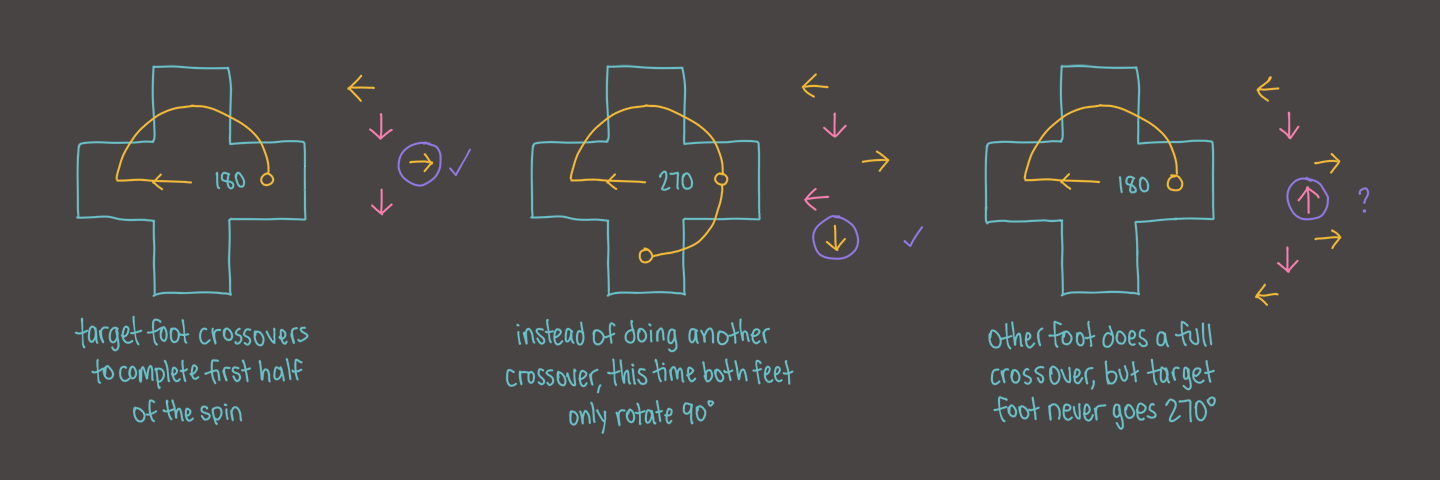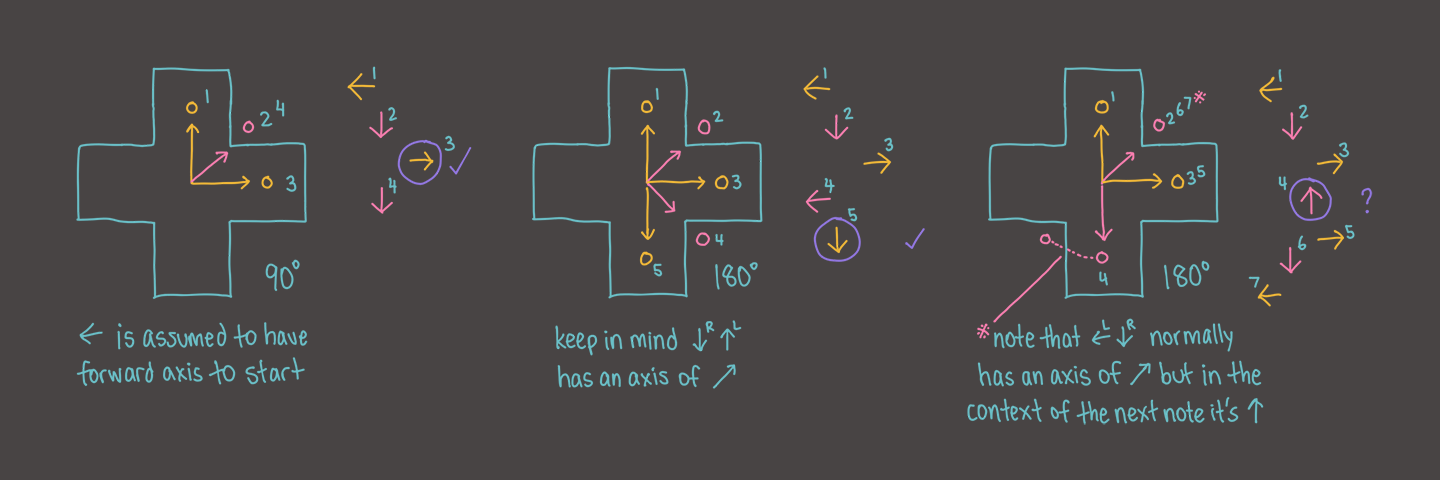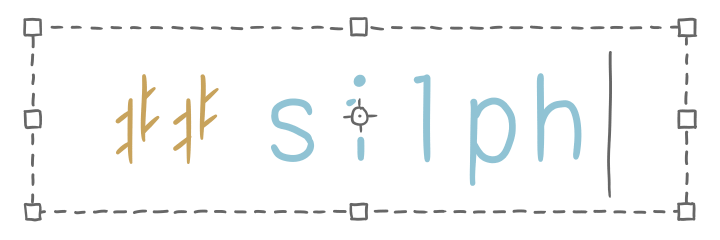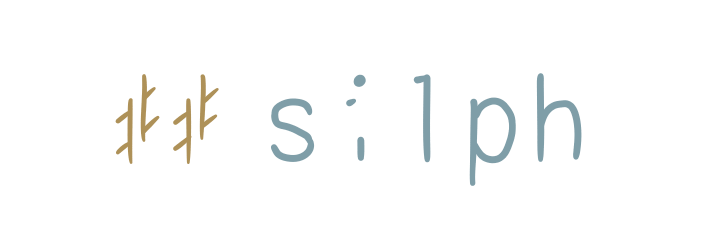Crossover ‘Angle’
I’ve heard of people referring to crossovers using angles. For example:

I do see where this comes from: if each arrow is considered as a bearing from the centre, the difference between two opposite arrows is equal to 180°. However, this definition falls short for some patterns that are described as a 270°, despite it technically being 180° by the rule.
For reference, the B2U(OG) pattern goes like this, with all four variants:
Variant (starting foot):
UL (R) DR (L) UR (L) DL (R)
↑ │ ↓ │ ↑ │ ↓
← │ → │ → │ ←
↓ │ ↑ │ ↓ │ ↑
→ │ ← │ ← │ →
↑ │ ↓ │ ↑ │ ↓
→ │ ← │ ← │ →
↓ │ ↑ │ ↓ │ ↑
← │ → │ → │ ←As Individual Arrows
If you look at a pattern arrow-by-arrow disregarding starting foot, it makes sense. You put a finger on the first arrow and follow: the first two variants turn anti-clockwise then clockwise, the last two vice versa.
A crossover can only occur when the first two notes have been established, so you only start counting from the third note onwards. This works out, because a full spin requires a foot to move to the opposite panel four times. I’ll just call this concept panel crossing in this article.[1]
It’s a pretty basic way to look at a spin, but there’s a few main problems:
- When playing “pad-style”, you actually spin the opposite direction
- It gets confusing if the patterns don’t spell out full spins (because you’re only using one finger after all, and pad-style uses two fingers/feet)
Split by Side
The next idea is to consider each finger/foot into account.

In the second pattern, the left foot goes from ←, crossover to →, then another 90° to ↓, which sums to 270°. However, for the B2U(OG) pattern, the left foot never actually goes to ↓, and so we can’t call this 270°, but rather 180°.
What makes it feel like a 270° is that, with a right foot ↑ start, we carry out three of the four panel crossings.
Axes
My argument is that the B2U(OG) pattern is actually a 180°.
As you might have already picked up through hints of what we’ve explained so far, the reasoning behind this is pretty simple – and is a concept most players already find intuitive (such that saying the pattern is a 270° is kind of strange).

It’s the direction you face when playing a pattern.

In the first example, you start off facing forward, and as you use your left foot to crossover, you turn clockwise until you face right (you would if you had no need to look at the screen, or if you were freestyling).
The B2U(OG) pattern involves two back-to-back crossovers (left foot ← to →, and right foot ↓ to ↑; in the diagram above, it’s notes 1+3 and 2+4): 90° × 2 = 180°.
As I explained in the screenshot, if you were to continue to carry out the spin without back-tracking:
- The next note (#5 in the diagram) would be left foot on ←, and you would be facing in that direction as well [270°]
- The note after that would be right foot on ↓, and voilà! You’re back facing forward because you just completed a spin [360°]
I think that makes more sense to me.

They agree too. But we make do.
- 左 has three syllables and 右 has two; 3 > 2, so more means left. Thanks, Japanese.
- 左 starts with a
zand 右 with ay;zcomes aftery, sozuǒmeans left. Thanks, Chinese. - The first stroke of 工 in 左 is written this → way. So that word means left. Thanks, East Asia.
Also, ever noticed fridge has a d but refrigeration doesn’t? Thanks, English.
[1] If you thought, “why don’t you just call these candles”, you’re absolutely right. I deliberately made up a unique term to avoid possible confusion between an existing term. When you do a ↓+↑/vice versa move with the same foot when facing forward, that’s not really considered a crossover unless you’re facing sideways. Strictly speaking, they’re all the same thing.

